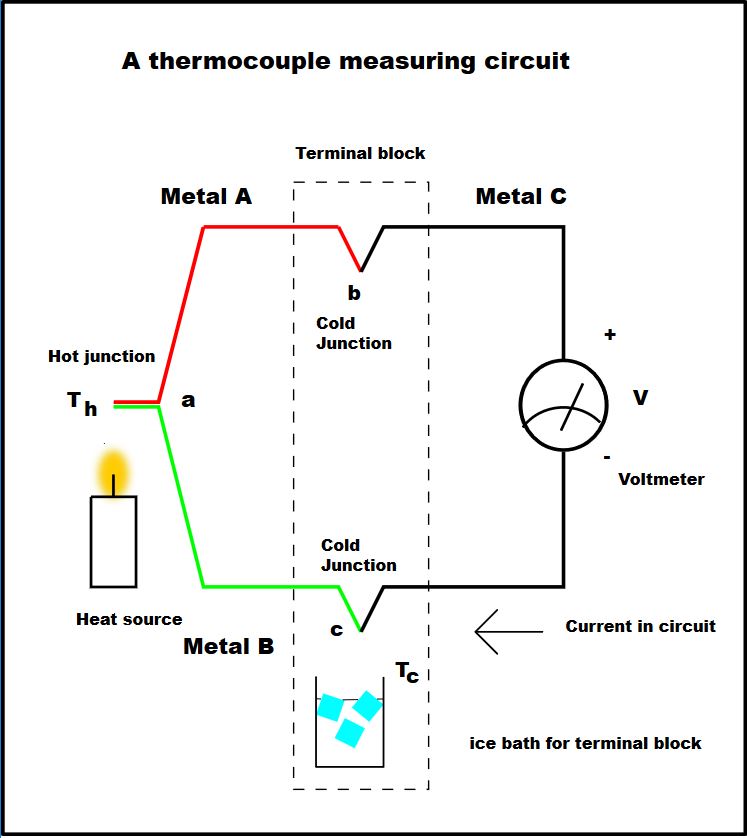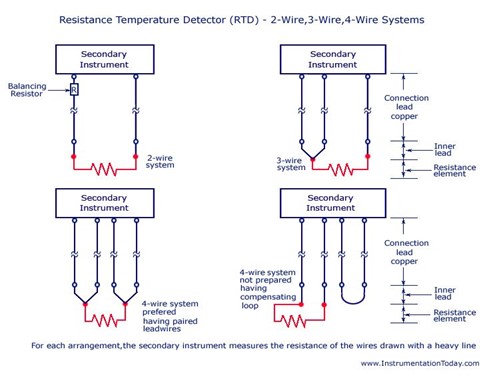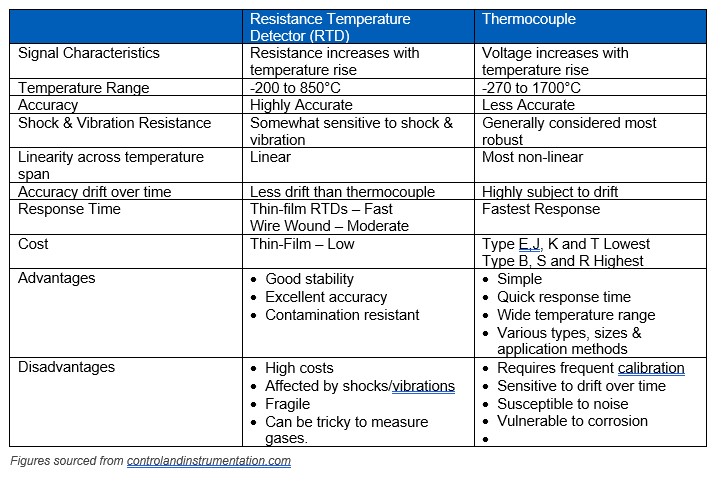Temperature Sensors
Temperature is one of the most measured variables in manufacturing. Temperature plays a vital role in efficiency, energy consumption, product quality and safety.
Just some of the places that EAS has installed temperature sensors include:
- Coolstores to monitor product & room temperatures.
- Process lines.
- Clean In Place (CIP) lines to make sure CIP is at the desired temperature, ensuring proper cleaning.
- Milk Lines to ensure the milk is <4 Degrees Celcius.
- Boilers to monitor temperatures, maintaining boiler efficiency.
- Throughout Milk Driers, providing overtemperature deluge alarm status.
There are various types of temperature sensors that can provide you with effective monitoring of temperature in your plant or process and EAS can assist you with selecting the right sensor for your needs.
The most commonly used sensors are Resistance Temperature Detectors (RTDs) and Thermocouples (T/Cs).
Thermocouples (T/Cs) are probably the most used method of temperature measurement. Thermocouples are contact sensors that are basically made up of two wires of different metals and joined at one end. Changes in the temperature at the junction of the dissimilar metals create a change in electromotive force (emf) between the other end and allow temperature to be measured.
There are many different types of thermocouples to fit a wide range of applications suitable for all industries, their appearances can be quite different.

But, as can be seen in the thermocouple diagram below, they all rely on the same basic principles and systems.

Image source: www.nz.rs-online.com/
Two or more dissimilar thermocouple wires form at least two junctions within a circuit. One of these is always kept at a steady and stable temperature – usually lower, but sometimes higher, than the temperature at the measuring (‘hot’) junction.
A voltmeter connected to the circuit reads the current created by electromotive forces because of the temperature differential. This can then be used to give a precise temperature reading.
Resistance Temperature Detectors (RTDs) are also contact sensors. They work on the principle that the electrical resistance of a metal increases as temperature increases – this is known as thermal resistivity. RTDs are made of resistive material such as platinum, copper or nickel depending on the requirements of the process.
The resistance of Resistance Temperature Detector (RTD) changes constantly with the applied temperature so the temperature is quite predictable by measurement of its resistance. It is this property which allows Resistance Temperature Detector (RTD) to measure temperature accurately and consistently.


Image source: www.instrumentationtoday.com
Each type of temperature sensor will work best in a particular set of conditions. The table below provides an indication of some of the conditions where thermocouples or RTDs are best used as well as the advantages and disadvantages each offers.

As you can see there are many factors that can affect the selection of the best temperature device for your application. EAS can help guide you in selecting the best sensor for your plant or process. Just get in touch with the team on 07 834 0505 or [email protected]

Leave a Reply
Want to join the discussion?Feel free to contribute!